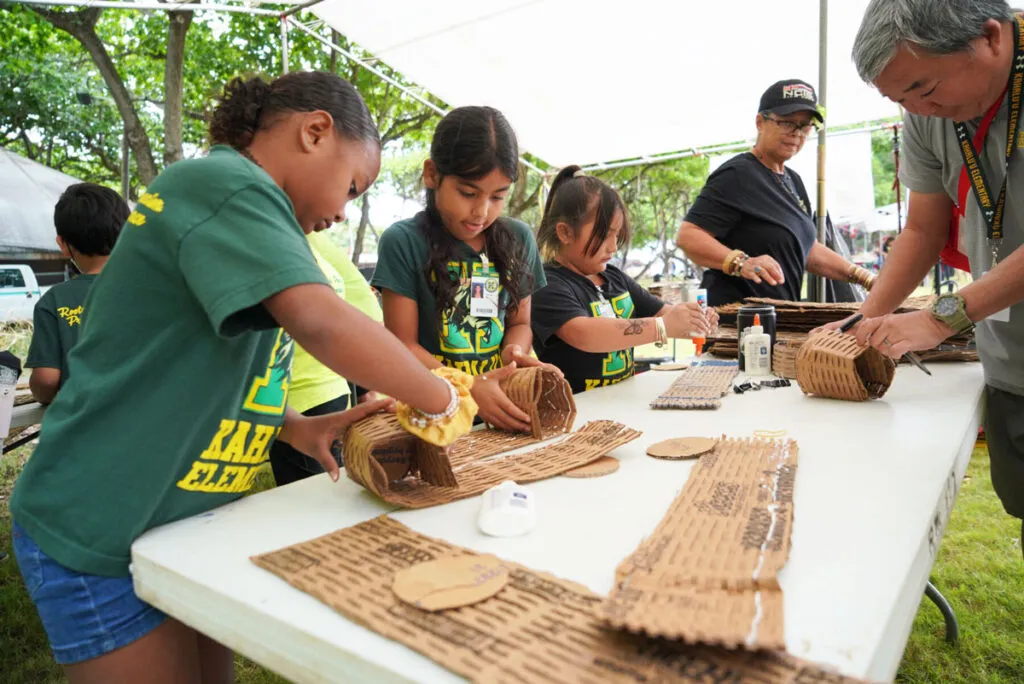Planning a trip to Hawaii and want to immerse yourself in the local culture in the most meaningful way? Learning a few Hawaiian phrases is not just a nice gesture, but also a key to unlocking unique and richer experiences. This article will provide you with the basics, effective learning tips, and insights into the Hawaiian language, helping you confidently communicate and explore this island paradise to the fullest.
Hawaii is not only famous for its stunning beaches and majestic volcanic landscapes, but also a land rich in traditions and culture. The Hawaiian language, or ʻŌlelo Hawaiʻi, is an inseparable part of its identity. Let’s explore how to learn this language to make your trip even more meaningful.
Why Learn Hawaiian for Your Trip?
Learning Hawaiian for your trip is more than just picking up a few words. It’s a way to show respect for the native culture, deepen your connection with local people, and enrich your travel experience.
- Show Respect: Hawaiians deeply value their language and culture. Your effort to learn and use Hawaiian will be highly appreciated, showing your respect for their heritage.
- Connect More Deeply: Communicating in Hawaiian helps you connect with locals more easily. You’ll have the opportunity to hear stories, experiences, and insights that you might miss by only speaking English.
- Unique Travel Experience: Understanding the language allows you to discover the fascinating meanings behind place names, legends, and customs.

Getting Started with Hawaiian
Learning any new language requires persistence and the right approach. Here are some ways to start learning Hawaiian:
1. Get Familiar with the Alphabet and Pronunciation
The Hawaiian alphabet is simple, with only 13 letters: 5 vowels (a, e, i, o, u) and 8 consonants (h, k, l, m, n, p, w, ʻ). The ʻ (ʻokina) represents a glottal stop, similar to the pause in “oh-oh”.
- Vowels:
- a: pronounced like “ah” in “father”
- e: pronounced like “ay” in “say”
- i: pronounced like “ee” in “see”
- o: pronounced like “oh” in “go”
- u: pronounced like “oo” in “too”
- Consonants:
- h, k, l, m, n, p: pronounced similarly to English
- w: can be pronounced as “w” or “v” depending on the word and context
- ʻ: glottal stop, a brief pause
2. Learn Basic Phrases
Starting with common phrases will help you feel more confident in communicating:
- Aloha: Hello, goodbye, love, compassion
- Mahalo: Thank you
- ʻAe: Yes
- ʻAʻole: No
- ʻO wai kou inoa?: What is your name?
- ʻO koʻu inoa: My name is
- Pehea ʻoe?: How are you?
- Maikaʻi au: I am fine
- ʻOluʻolu: Nice to meet you
- A hui hou: Goodbye (until we meet again)
3. Utilize Learning Resources
There are many online and offline resources available for learning Hawaiian:
- Language Learning Apps: Duolingo and Memrise offer free Hawaiian courses.
- Books and Dictionaries: Purchase Hawaiian language books or a Hawaiian-English dictionary for vocabulary and grammar lookup.
- Websites and YouTube Channels: Search for websites and YouTube channels that teach Hawaiian.
- Join a Class: If you have time, consider joining Hawaiian language classes at a cultural center or local school.
4. Practice Speaking
The best way to learn a language is to practice speaking regularly. Don’t hesitate to use the phrases you’ve learned when you meet locals.
- Talk to Native Speakers: Look for opportunities to converse with Hawaiians, perhaps in shops, restaurants, or at cultural events.
- Join Language Groups: Participate in online or offline Hawaiian language learning groups to practice with fellow learners.
- Listen to Music and Watch Movies: Listen to Hawaiian music and watch movies with Hawaiian subtitles to familiarize yourself with the rhythm and expressions.
Effective Tips for Learning Hawaiian
- Set Clear Goals: Define your learning objectives, such as learning enough to greet people, order food, or ask for directions.
- Learn Vocabulary by Topic: Focus on vocabulary related to travel, food, culture, etc.
- Use Flashcards: Create flashcards to memorize vocabulary and phrases.
- Learn Basic Grammar: Understand simple sentence structures to build complete sentences.
- Be Persistent and Passionate: Language learning takes time and effort. Stay persistent and maintain your passion for Hawaiian culture.
- Learn Through Culture: Explore Hawaiian culture, history, and traditions to deepen your understanding of the language.
Things to Keep in Mind When Learning Hawaiian
- Pronounce Correctly: Pay attention to the pronunciation of each syllable, especially the ʻokina.
- Use in Context: Some words may have different meanings depending on the context.
- Respect the Culture: Use the language respectfully and avoid using inappropriate words.
Hawaiian Cuisine and Language
Hawaiian cuisine is an important part of the local culture. Learning a few food-related words will help you order food easily and better understand the local specialties.
- ʻAi: To eat
- Iʻa: Fish
- Puaʻa: Pork
- Poi: Dish made from taro root
- Lomi Salmon: Salted salmon
- Kalua Pig: Pork cooked in an underground oven
- Haupia: Coconut milk pudding
Conclusion
Learning Hawaiian for your trip is a wonderful experience that helps you explore the beauty of this island more deeply. With persistence and passion, you can learn basic phrases and communicate confidently with locals. Let the Hawaiian language be a bridge between you and the unique culture of this land, bringing you a memorable journey. Aloha and see you in Hawaii!